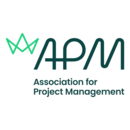Future-proofing portfolios in uncertain times
Professionalisation of skills, tackling climate change and artificial intelligence are among the main factors to consider when it comes to future-proofing, a survey of portfolio, project and programme professionals has found.
The survey, carried out by Association for Project Management (APM) in partnership with research company Censuswide, asked 1,000 professionals working on projects and portfolios in the UK what they felt would be the biggest opportunities and challenges in the next five years.
Respondents were asked to choose up to three opportunities they feel are most significant. These were:
- Professionalisation of skills – selected by 38% of respondents
- Tackling climate change/working towards net zero – 36%
- Pivoting to new energy sources – 35%
- When asked what the biggest challenges are likely to be in the next five years, these were found to be:
- Tackling climate change/supporting clean growth – selected by 19% of respondents
- The cost of energy and fuel – 19%
- Artificial intelligence, automation and big data – 18%
In an increasing volatile, uncertain and complex world, it’s essential that portfolio managers not only adapt to change when it occurs, but also make preparations in advance to future-proof their portfolios.
APM’s Portfolio Management Specific Interest Group (SIG) conference – Future-proofing: Successful portfolio leadership and management in uncertain times - will focus on this topic.
The conference, which takes place at the Millennium Gloucester Hotel in Kensington, London on 16 May, will explore how different organisations are future-proofing their portfolios, and the strategies they’re using to achieve this. It will also look at how leadership styles are evolving to meet current and future challenges.
[edit] 'How can we future-proof portfolios?'
Steve Leary, co-Chair of the Portfolio Management SIG committee, said: “Future-proofing your portfolio is a challenge at the best of times, with changing priorities and organisation challenges. It’s made even harder when only half of trading businesses are able to get the materials, goods and services they need from within the UK without supply issues, as the Office for National Statistics reported in March 2023. Businesses are also operating against a backdrop of global political and economic instability, a war in Europe and tensions with China.
“Many people are asking ‘how can we future-proof our portfolios? This conference is a fantastic opportunity to hear the experiences of executives and senior specialists in this field, as well as networking with fellow professionals.”
Speakers at the conference are:
- Professor Adam Boddison OBE, Chief Executive of APM.
- Stephen White, Chief Operating Officer at Santander (keynote speaker)
- Tony Caink, Head of Operating Model and Ways of Working at Nationwide Building Society (keynote speaker)
- Oliver Fisher, Chief Portfolio Officer at HMRC
- Steve Moore, Director of Operations (Major Projects & Programmes Delivery) at the Environment Agency
- Jo Stanford, Chief Executive at the Healthcare Project and Change Association, and former Head of Corporate Portfolio Office and Head of Profession for Health Education England
Steve commented: “All our speakers are very senior in their organisations and, with a mix of public and private sector presentations, will share their approaches, challenges and successes with conference attendees. It will be a fascinating and educational conference with plenty of time to ask questions of the speakers.”
Tickets for the event are available now, with discounts offered for individual and corporate members of APM.
If you have a professional interest in leading and managing portfolios, APM’s Portfolio Management SIG promotes awareness of latest practices, researches new ideas, develops new approaches, and provides ways to share experiences and debate challenges. Register to follow this SIG.
This article appears on the APM news and blog site as "Future-proofing portfolios in uncertain times: APM conference to explore how and why" dated March 31, 2023.
--Association for Project Management
[edit] Related articles on Designing Buildings
Featured articles and news
Shortlist for the 2025 Roofscape Design Awards
Talent and innovation showcase announcement from the trussed rafter industry.
OpenUSD possibilities: Look before you leap
Being ready for the OpenUSD solutions set to transform architecture and design.
Global Asbestos Awareness Week 2025
Highlighting the continuing threat to trades persons.
Retrofit of Buildings, a CIOB Technical Publication
Now available in Arabic and Chinese aswell as English.
The context, schemes, standards, roles and relevance of the Building Safety Act.
Retrofit 25 – What's Stopping Us?
Exhibition Opens at The Building Centre.
Types of work to existing buildings
A simple circular economy wiki breakdown with further links.
A threat to the creativity that makes London special.
How can digital twins boost profitability within construction?
The smart construction dashboard, as-built data and site changes forming an accurate digital twin.
Unlocking surplus public defence land and more to speed up the delivery of housing.
The Planning and Infrastructure Bill
An outline of the bill with a mix of reactions on potential impacts from IHBC, CIEEM, CIC, ACE and EIC.
Farnborough College Unveils its Half-house for Sustainable Construction Training.
Spring Statement 2025 with reactions from industry
Confirming previously announced funding, and welfare changes amid adjusted growth forecast.
Scottish Government responds to Grenfell report
As fund for unsafe cladding assessments is launched.
CLC and BSR process map for HRB approvals
One of the initial outputs of their weekly BSR meetings.
Building Safety Levy technical consultation response
Details of the planned levy now due in 2026.
Great British Energy install solar on school and NHS sites
200 schools and 200 NHS sites to get solar systems, as first project of the newly formed government initiative.
600 million for 60,000 more skilled construction workers
Announced by Treasury ahead of the Spring Statement.


























Comments
[edit] To make a comment about this article, click 'Add a comment' above. Separate your comments from any existing comments by inserting a horizontal line.